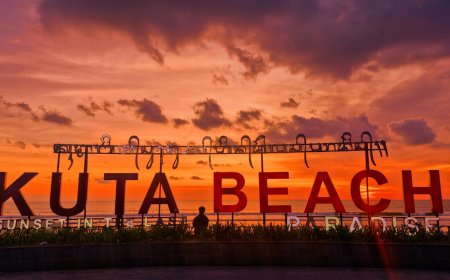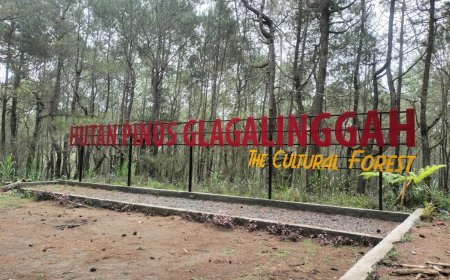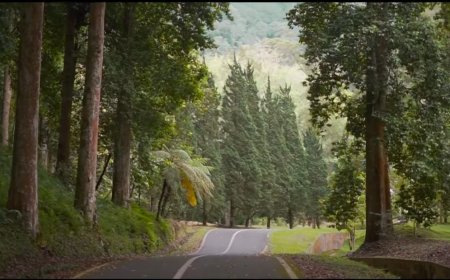Alas Pala: A Narrative and Spiritual Energy from the Story of the Walking Tree
It's incomplete to talk about the island of Bali without discussing the spiritual beliefs that are still inherent in the people. Therefore, it cannot be denied that there are so many legends that have grown, developed, and are still believed and respected today in Bali.
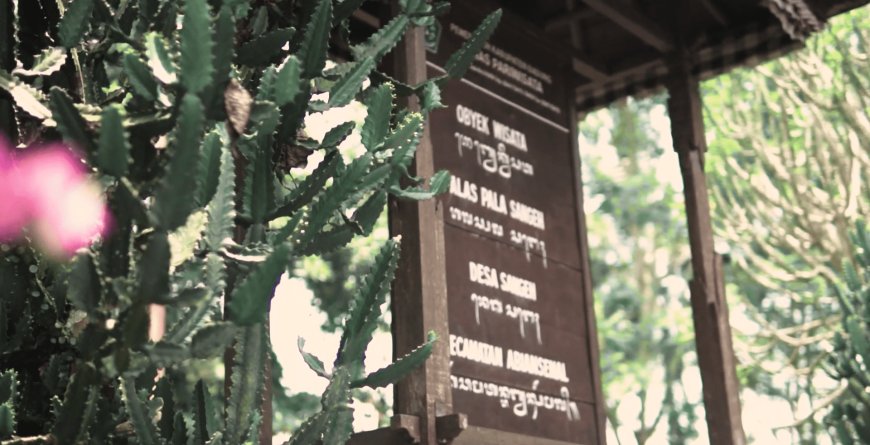
Have you ever heard a legend or spiritual tale of the most famous walking tree in Bali? Or maybe you've heard of Alas Pala Sangeh, where there are hundreds of gray monkeys? Alas Pala or also known as Alas Pala Sangeh is a forest with a total area of about 14 hectares which is dominated by pala trees (Dipterocarpus trinervis) with an area of up to 10 hectares. The pala tree in question is not nutmeg (in Indonesian we call nutmeg as pala) which is used as a spice in the kitchen but one type of wood-producing tree that is typical of the tropics. Let's agree to call the pala tree as pala instead of nutmeg to avoid misunderstandings. Alas Pala Sangeh is also known as one of the Monkey Forests in Bali. Alas Pala is located in Sangeh Village, Abiansemal District, Badung Regency, a regency in Bali which is very famous for its Taman Ayun Temple. Alas Pala Tourism has been established since 1st January 1969 which was then followed by several developments, for example in 1972.
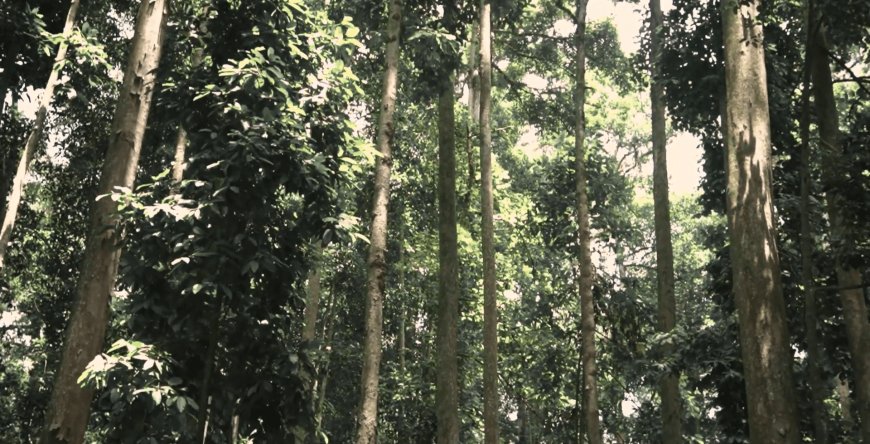
Pala Trees in Alas Pala (Photo Source : Editorial Collection)
The diversity of flora and fauna in this forest makes it one of the favorite tourist destinations for tourists visiting Bali. Tourists can enjoy the coolness of Alas Pala while seeing the cute gray monkeys (Macaca fascicularis), which number up to 600. Even though they look cute, tourists who come must be careful because it is not uncommon for this long-tailed monkey to annoy visitors. There are also other fauna such as the Cow Falcon (Falco moluccensis), Brontok Eagle (Spizaetus cirrhatus), Bido Snake Eagle (Spilornis cheela), Crater Eagle (Falco peregrinus), Owl (Pypte alba javanica), Merbah Cerucuk (Picnonotus gouvier), Weasel (Paradoxurus hermaproditus), Forest Cat (Felis bengalensis), and Sendang lawe (Ciconia episcopus). Although this protected forest is dominated by pala trees, other flora such as Amplas (Tetracera scandens), Pule (Alstonia scolaris), Buni (Antidema bunius), Yellow Cempaka (Michelia champaca), and Kepohpoh (Buchacananania arboresncens) can also be found here.
Uniquely, behind its popularity as a homogenous forest tourist destination, Alas Pala Sangeh actually has a spiritual story that is believed and respected by the local community. This spiritual story is not hidden and is actually an added value as a reason to come to Alas Pala Sangeh. The Sangeh Traditional Village has a legend passed down from generation to generation which has now even spread to the ears of the outside community. This legend tells of a princess from Ida Bhatara ring Gunung Agung who had to receive a long punishment as a form of responsibility for the mistakes she had committed. Pulaki, the largest temple in North Bali, is where the Princess had to spend her sentence. When the sentence expires, the Princess intends to return home accompanied by a herd of animals such as monkeys, snakes, and tigers. While traveling, the Princess saw something that logic could not accept, a forest (alas) walking in front of her. This forest is none other than Alas Pala which is believed to have traveled towards West Bali from Mount Agung in East Bali. Because the Princess saw Alas Pala walking, Alas Pala then stopped at the place now known as Sangeh. Sangeh is the result of combining two words, namely "Sang" which means person, and "Ngeh" which means to see. So the word Sangeh can be defined as a person who sees.
After seeing how Alas Pala walked, the Princess gave up her intention to return to Mount Agung and chose to stay forever in this forest. Princess lives in the forest with a herd of animals who accompany her during her journey. Right in the middle of Alas Pala there is a temple called Bukit Sari Temple which is a relic of the Mengwi Kingdom in the 17th century. This temple was built as a place to worship the Princess and Ida Bhatara Gunung Agung. The people of Sangeh Traditional Village believe that the gray monkeys that still live in Alas Pala are descendants of monkeys who lived with the Princess in ancient times. They consider these monkeys to be the incarnation of Princess warriors who are considered sacred monkeys. The existence of these monkeys should not be disturbed because they are considered to bring blessings to the local community.

Gray Monkeys in Alas Pala (Photo Source : Editorial Collection)
The price of wood from trees of the Dipterocarpus genus can be said to be quite expensive, ranging from IDR 1,250,000 for one log. Let alone, when they are stolen and cut down for sale, local people even hold these trees so sacred that not a single one of the trees that grow is ever cut down. In addition, the fruit from the pala tree itself is also never taken carelessly. This is caused by people who believe that if the tree is cut down or the fruit is taken carelessly then disaster or curse will befall the person who does it. Even in precarious conditions, the pala trees in Alas Pala will not be cut down. An incident occurred in early January 2010 where an old pala tree was predicted to fall and hit the main building of Bukit Sari Temple. Due to the inherent trust in the community, the tree was not cut down and eventually collapsed by itself to the southwest between the Bale Kulkul and Pawaregan buildings. Fortunately, only a little damage was caused, damage to the outer walls of Pawaregan.
To protect the Sangeh forest area, the local indigenous people drew up a customary law in the form of awig-awig (red: regulations that apply in a traditional village). In Pawos 47 Awig-Awig Pakraman Sangeh Village it is stated:
"Kuluwarga Desa Adat Sangeh tan kengi ngusak asik ring sejeroning alas menakadi ngambil taru, rencek, buah pala, menyan lan sane siosan sedurung polih pamutus saking prajuru Desa Adat Sangeh."
This, if translated, means that the Sangeh Traditional Village Family is not allowed to damage things related to the forest such as taking Trees, Twigs, Fruits, Menyan, and others before obtaining the approval of the Sangeh Traditional Village Management.
This law has a very important role considering that the pala tree has a unique shape and it is also reported that it cannot be planted anywhere else so no one can own wood from the pala tree. Apart from that, the existence of this customary law will regulate local village communities to continue to respect and protect pala trees and other flora and fauna that live in Alas Pala. Bearing in mind how awig-awig binds both personally and religiously the indigenous people in Sangeh Village, awig-awig also regulates the sanctions given when violating applicable customary law. Mentioned that:
"Yening wenten kuluwarga sane mamurung awig-awig Desa Adat Sangeh kadanda antuk jinah bolong asli 200 kepeng."
This can be translated as If a family violates the rules of the awig-awig of the Sangeh Traditional Village, they will be fined 200 pieces of real money.

Sangeh Natural Tourist Park Sign (Photo Source : Editorial Collection)
Then, if a violation occurs in the Sangeh forest area, the community concerned will be subject to sanctions in the form of restoring balance in a noetic manner by carrying out a series of traditional rituals, the mecaru ceremony or noetic cleansing in the Sangeh forest area and at the Bukit Sangeh Temple.
Spending time having fun in Alas Pala is a pleasant thing for tourists. It would be much more pleasant for the local indigenous community if tourists also respected the beliefs that apply in the Alas Pala tourist area. Respecting this belief can be done by complying with applicable rules, such as female visitors or tourists being prohibited from entering forest areas if they are menstruating, dressing modestly and neatly when entering sacred areas, not holding or playing with monkeys, and not throwing rubbish carelessly.





















